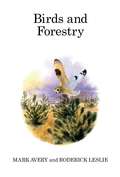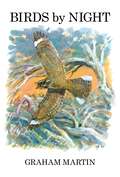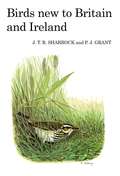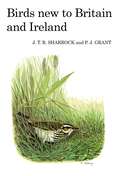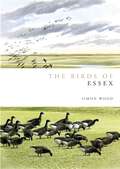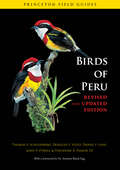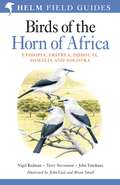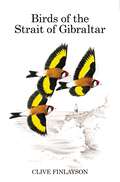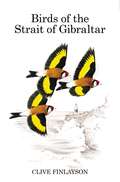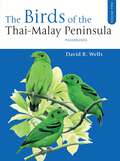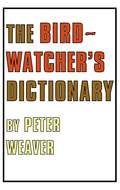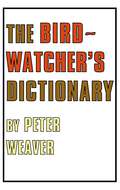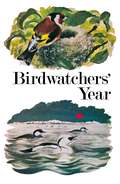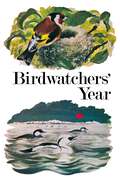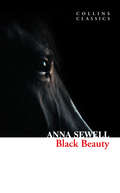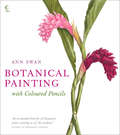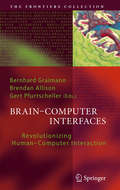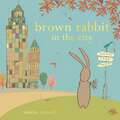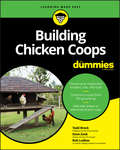- Table View
- List View
Birds and Forestry (Poyser Monographs)
by Mark Avery Roderick LeslieThe conflict between forestry and nature conservation has, in recent years, become a major environmental issue. The planting of large tracts of land with exotic conifers and the resulting disturbance of existing plant and animal communities has polarized the debate, each camp believing that it holds the most rational view. This book tackles the issues, and represents a step toward achieving prudent land planning.
Birds and Forestry (Poyser Monographs #90)
by Mark Avery Roderick LeslieThe conflict between forestry and nature conservation has, in recent years, become a major environmental issue. The planting of large tracts of land with exotic conifers and the resulting disturbance of existing plant and animal communities has polarized the debate, each camp believing that it holds the most rational view. This book tackles the issues, and represents a step toward achieving prudent land planning.
Birds by Night (Poyser Monographs)
by Graham MartinFor many people, watching and studying birds is exclusively a day time activity. However, for many birds twilight and night time are not a barrier to useful activity. It is true that very few birds are exclusively nocturnal, but many birds which are active by day also conduct limited, and often crucial, activities after dusk. This book examines many examples of the nocturnal behaviour of birds; from the occasional night feeding of wildfowl and shorebirds to the night singing and night migration of certain passerines, and from the location of nest sites by sea birds to the nocturnal foraging of owls and nightjars. The special cases of flightless nocturnal birds and those birds which dwell in lightless caves are also considered.Throughout, this survey considers not only what it is that birds do at night but also discusses how these nocturnal activities are possible. It brings together studies in field ornithology, sensory science, ecology and physics and involves comparisons of the sensory capacities of other animals, including man. It is shown how the senses of hearing, smell and touch, as well as vision, play a crucial role in many of the night time activities of birds.However, these senses are not always adequate for fully explaining how nocturnal behaviours are executed. To achieve this we must look at the complex of relationships between behavioural and sensory adaptations and the particular environments which birds inhabit from dusk to dawn.Jacket paintings by John Busby
Birds in Ireland (Poyser Monographs)
by Clive HutchinsonBirdwatching has become an increasingly popular pastime in Ireland as elsewhere. Nor is all of the birdwatching done by the Irish. Many professional ornithologists from Britain and Western Europe find good reason to study Ireland's birds, as do the numerous birdwatching visitors each year. Clive Hutchinson, a leading Irish ornithologist, has compiled this comprehensive review of birds in the Republic and Northern Ireland to coincide with the 21st anniversary year of the Irish Wildbird Conservancy's foundation and he has had the IWC's active support throughout.The book is timely for other reasons, too. Knowledge about the status and distribution of birds in Ireland has increased greatly since the 1960s and this is reflected in the detailed species accounts which form the major part of the book.Factors which led to this greater knowledge, recent changes in bird distribution and status, and reasons for the absence of some species are topics discussed in the book's introductory chapters. Other subjects covered are Ireland's topography, climate and habitats, a review of ornithology and ornithologists in Ireland over the last 100 years, and conservation programmes of more recent times.John Busby's superb illustrations (more than 100) are a feature of the book, helping to set the Irish scene as well as its birds.Jacket paintings by John Busby
Birds in Scotland (Poyser Monographs #107)
by Valerie M. ThomThis impressively comprehensive study and review of the birds in Scotland by Valerie Thom, editor of Scottish Birds and past-President of the Scottish Ornithologists' Club, may be said to follow on where the celebrated two volumes of The Birds of Scotland (1953), by Dr Baxter and Miss Rintoul, left off. It does more than that, however, since not only has there been a profound increase in ornithological coverage and data (as reflected in the species accounts), there have also been great changes in habitat and environment since the days of Baxter & Rintoul. These aspects form the themes of the ten preliminary chapters reviewing the Scottish scene today in terms of habitat, conservation, birdwatching and the changes in species status and distribution.The species accounts, the backbone of the book, review the period 1950-83 but include, where practicable, records of rarities and details of counts up to the spring of 1985; there are also brief summaries of earlier data based on the researches of Baxter & Rintoul. In all, 497 species are dealt with.The texts of major species accounts are complemented by 173 distribution maps and many tables of relevant data, and there are 129 species drawings by a team of artists under the editorship of Donald Watson, who also contributes chapter head pieces and other drawings. A section of photographs illustrates the varied habitats typical of Scotland today. There are, further, appendices and an extensive bibliography.The book is of great and obvious interest to all birdwatchers in Scotland but it will be of special value, too, to the many thousands of birdwatching visitors from elsewhere in these islands and from countries abroad.The Scottish Ornithologists' Club, for whom the book is published, and all whose records and researches made the author's work possible, have reason to be proud of Valerie Thom's achievement. The book's users will be indebted to them all for this comprehensive and essential guide to birds in Scotland.
Birds in Scotland (Poyser Monographs #107)
by Valerie M. ThomThis impressively comprehensive study and review of the birds in Scotland by Valerie Thom, editor of Scottish Birds and past-President of the Scottish Ornithologists' Club, may be said to follow on where the celebrated two volumes of The Birds of Scotland (1953), by Dr Baxter and Miss Rintoul, left off. It does more than that, however, since not only has there been a profound increase in ornithological coverage and data (as reflected in the species accounts), there have also been great changes in habitat and environment since the days of Baxter & Rintoul. These aspects form the themes of the ten preliminary chapters reviewing the Scottish scene today in terms of habitat, conservation, birdwatching and the changes in species status and distribution.The species accounts, the backbone of the book, review the period 1950-83 but include, where practicable, records of rarities and details of counts up to the spring of 1985; there are also brief summaries of earlier data based on the researches of Baxter & Rintoul. In all, 497 species are dealt with.The texts of major species accounts are complemented by 173 distribution maps and many tables of relevant data, and there are 129 species drawings by a team of artists under the editorship of Donald Watson, who also contributes chapter head pieces and other drawings. A section of photographs illustrates the varied habitats typical of Scotland today. There are, further, appendices and an extensive bibliography.The book is of great and obvious interest to all birdwatchers in Scotland but it will be of special value, too, to the many thousands of birdwatching visitors from elsewhere in these islands and from countries abroad.The Scottish Ornithologists' Club, for whom the book is published, and all whose records and researches made the author's work possible, have reason to be proud of Valerie Thom's achievement. The book's users will be indebted to them all for this comprehensive and essential guide to birds in Scotland.
Birds New to Britain and Ireland (Poyser Monographs)
by J.T.R. SharrockThe 83 species featured in this book, in date sequence of discovery, had not been recorded in Britain or Ireland before 1946. The original accounts of the sightings published in issues of British Birds* between 1947 and 1982 are now reprinted and supplemented with comment by Dr Sharrock on subsequent occurrences and current status. In addition, Peter Grant provides identification notes drawing attention to points not covered in the original accounts. There is also a world distribution map for each species and a line illustration to head each of the accounts. At the end of the book a section of plates reproduces 81 'first-sighting' photographs covering 32 of the species in the book.
Birds New to Britain and Ireland (Poyser Monographs #110)
by J.T.R. SharrockThe 83 species featured in this book, in date sequence of discovery, had not been recorded in Britain or Ireland before 1946. The original accounts of the sightings published in issues of British Birds* between 1947 and 1982 are now reprinted and supplemented with comment by Dr Sharrock on subsequent occurrences and current status. In addition, Peter Grant provides identification notes drawing attention to points not covered in the original accounts. There is also a world distribution map for each species and a line illustration to head each of the accounts. At the end of the book a section of plates reproduces 81 'first-sighting' photographs covering 32 of the species in the book.
Birds of Essex (Helm County Avifauna)
by Simon WoodThe County Avifaunas are a growing series giving full details of the status and range of every species recorded in the county in question. Each title covers all species on the county list, with a detailed breakdown of rarity records, and each has introductory sections describing the county's general ecology, climate, weather patterns, its ornithological history and conservation record.Essex is of national and international importance to many migrating and wintering wildfowl and waders, which can be found on the estuaries. Further inland, the Lea Valley harbours important populations of several species within the complex of reservoirs and gravel-pits. Elsewhere, the diverse habits of woodland and parkland, heaths and commons, agricultural land and urban areas mean that at all times of year there is the opportunity to see upwards of 100 species in a day with little effort. This book analyses and summarises all the data collated and documented over the last 200 years and includes available records to the end of 2004. Introductory chapters discuss the geology and habitats of Essex and the amazing fossil bird record. The individual accounts provide an up-to-date status of each species and patterns of occurrence within Essex. A distribution map is included for most breeding species. A breakdown and analysis are provided for all county rarities. Superb line drawings and photographs illustrate the book, all by talented local artists and photographers. This book is an essential reference for anybody who has watched birds in this amazing county.
Birds of Peru: Revised and Updated Edition
by Thomas S. Schulenberg Douglas F. Stotz Daniel F. Lane John P. O'Neill Theodore A. Parker III Dr Antonio Brack EggBirds of Peru is the most complete and authoritative field guide to this diverse, neotropical landscape. It features every one of Peru's 1,817 bird species and shows the distinct plumages of each in 307 superb, high-quality color plates. Concise descriptions and color distribution maps are located opposite the plates, making this book much easier to use in the field than standard neotropical field guides. This fully revised paperback edition includes twenty-five additional species. A comprehensive guide to all 1,817 species found in Peru--one fifth of the world's birds--with subspecies, sexes, age classes, and morphs fully illustrated Designed especially for field use, with vivid descriptive information and helpful identification tips opposite color plates Detailed species accounts, including a full-color distribution map Includes 25 additional species not covered in the first edition Features 3 entirely new plates and more than 25 additional illustrations
Birds of Peru: Revised and Updated Edition (PDF)
by Antonio Brack Egg Thomas S. Schulenberg Douglas F. Stotz Daniel F. Lane John P. O'Neill Theodore A. Parker IIIBirds of Peru is the most complete and authoritative field guide to this diverse, neotropical landscape. It features every one of Peru's 1,817 bird species and shows the distinct plumages of each in 307 superb, high-quality color plates. Concise descriptions and color distribution maps are located opposite the plates, making this book much easier to use in the field than standard neotropical field guides. This fully revised paperback edition includes twenty-five additional species. A comprehensive guide to all 1,817 species found in Peru--one fifth of the world's birds--with subspecies, sexes, age classes, and morphs fully illustrated Designed especially for field use, with vivid descriptive information and helpful identification tips opposite color plates Detailed species accounts, including a full-color distribution map Includes 25 additional species not covered in the first edition Features 3 entirely new plates and more than 25 additional illustrations
Birds of the Horn of Africa: Ethiopia, Eritrea, Djibouti, Somalia and Socotra (Helm Field Guides)
by Nigel Redman Terry Stevenson John Fanshawe Brian Small John GaleThe Horn of Africa has the highest endemism of any region in Africa,and around 70 species are found nowhere else in the world. Many ofthese are confined to the isolated highlands of Ethiopia and Eritrea,but a large number of larks specialise in the arid parts of Somalia andadjoining eastern Ethiopia, whilst the island of Socotra has its ownsuite of endemic species. The region is also an important migrationroute and wintering site for many Palearctic birds.This is the first field guide to the birds of this fascinating region,and a companion to Birds of East Africa by two of the same authors.Over 200 magnificent plates by John Gale and Brian Small illustrateevery species that has ever occurred in the five countries covered bythe guide, and the succinct text covers the key identificationcriteria. Special attention is paid to the voices of the species, andover 1000 up-to-date colour distribution maps are included. This long-awaited guide is a much-needed addition to the literature onAfrican birds and an essential companion for birders visiting theregion.
Birds of the Strait of Gibraltar (Poyser Monographs)
by Clive FinlaysonThe Strait of Gibraltar is famous as a major point of passage for Palaearctic birds migrating between their European breeding grounds and their winter quarters in Africa. Clive Finlayson, a native of the Rock and a trained ornithologist, presents a fascinating account of the region and its resident and transitory bird life. The first chapter of the book describes the area, which broadly defined includes the Coto Donana in the north and the Merja Zerga in the south, and the geographic and climatological characteristics which make it a suitable crossing place. In scope this book goes beyond the strict definition of the Strait and, following Irby's 19th Century work, examines the rich area where Europe meets Africa. The chapters which follow describe in detail the migration patterns of the principal passage species including their origins, destinations and overall numbers, showing how the precise conditions of weather and visibility affect the specific choice of route and timing of the crossing. The breeding and wintering bird communities are then considered and the ornithology of the entire region summarized. Whether or not you have ever witnessed the thousands of raptors, storks and other birds that may make this legendary crossing in a single day, this book will conjure the spirit of this extraordinary place. Delightful illustrations by lan Willis complete an important and entertaining book.
Birds of the Strait of Gibraltar (Poyser Monographs #73)
by Clive FinlaysonThe Strait of Gibraltar is famous as a major point of passage for Palaearctic birds migrating between their European breeding grounds and their winter quarters in Africa. Clive Finlayson, a native of the Rock and a trained ornithologist, presents a fascinating account of the region and its resident and transitory bird life. The first chapter of the book describes the area, which broadly defined includes the Coto Donana in the north and the Merja Zerga in the south, and the geographic and climatological characteristics which make it a suitable crossing place. In scope this book goes beyond the strict definition of the Strait and, following Irby's 19th Century work, examines the rich area where Europe meets Africa. The chapters which follow describe in detail the migration patterns of the principal passage species including their origins, destinations and overall numbers, showing how the precise conditions of weather and visibility affect the specific choice of route and timing of the crossing. The breeding and wintering bird communities are then considered and the ornithology of the entire region summarized. Whether or not you have ever witnessed the thousands of raptors, storks and other birds that may make this legendary crossing in a single day, this book will conjure the spirit of this extraordinary place. Delightful illustrations by lan Willis complete an important and entertaining book.
The Birds of the Thai-Malay Peninsula Vol. 2
by David R. WellsThis well-illustrated volume covers the passerines of Singapore, peninsular Malaysia, southern Thailand and the tip of Tenasserim (Burma) with their associated island archipelagos. David Wells' historically complete accounts draw on a full range of recent field and museum research. Over 380 species are described, including topics such as systematics, distribution, plumage, biometrics, status, habitat, food and foraging, voice, behaviour, breeding biology, moult and conservation. Along with an accompanying volume, on nonpasserine species, it brings together the most complete modern summery of field survey work and other research on all the birds found in the peninsula. Volume 1 and Volume 2 available as a shrinkwrapped set: 0 7136 7483 0 £99
The Birdwatcher's Dictionary (Poyser Monographs #112)
by Peter WeaverThe author defines more than 1100 words and terms in this illustrated dictionary for the birdwatcher. Its attraction for the relative novice is obvious but it is equally directed to experienced birdwatchers who will find succinct definitions of terms that are new to them and of others that they have understood none too well. Whatever the user's ornithological expertise the book will expand or confirm his or her knowledge and offer at the same time an absorbing and entertaining browse, as a good dictionary should. Among the appendices is a full list of species on the British and Irish List arranged in 'Voous Order' and with categories of status in Britain and Ireland
The Birdwatcher's Dictionary (Poyser Monographs #112)
by Peter WeaverThe author defines more than 1100 words and terms in this illustrated dictionary for the birdwatcher. Its attraction for the relative novice is obvious but it is equally directed to experienced birdwatchers who will find succinct definitions of terms that are new to them and of others that they have understood none too well. Whatever the user's ornithological expertise the book will expand or confirm his or her knowledge and offer at the same time an absorbing and entertaining browse, as a good dictionary should. Among the appendices is a full list of species on the British and Irish List arranged in 'Voous Order' and with categories of status in Britain and Ireland
Birdwatchers' Year (Poyser Monographs)
by Leo Batten Jeremy Sorensen Donald Watson Mike J. WareingBirdwatchers' Year is, in essence, six 'years' of bird activity and behaviour as recorded, month by month, by six experienced bird watchers and ornithologists. The result is a fascinating compilation of fact, anecdote and general observation as seen and noted by the authors, that will appeal to birdwatchers at all levels of expertise. The habitats (Brent Reservoir in NW London, a Kentish woodland, the Ouse Washes in Cambridgeshire, farmland in Derbyshire, a mountain region of SW Scotland, and an island, the Calf of Man) encompass a wide and varied range of breeding, resident and passage birds, but the authors' observations are not confined to bird life alone - there are comments and 'asides' on many aspects of natural history and wildlife, weather and seasons, conservation and ecology. Each author has brought an individual approach to his 'diary' with the result that they are entertainingly diverse in style, content and viewpoint. The common factor throughout is an affectionate regard for the subject, an intimate knowledge of the habitat, and an evident understanding and knowledge of the birds and their environment. The diarists are: Leo Batten, Research Officer at the British Trust for Ornithology; Dr Jim Flegg, Director of the BTO; Jeremy Sorensen, RSPB Warden of the Ouse Washes; Donald Watson, bird artist and past-President of the Scottish Ornithologists' Club; Mike J. Wareing, farmer; Malcolm Wright, Warden of the Calf of Man Bird Observatory. The diaries are illustrated with line drawings by Ian Willis, except for that of Donald Watson, which is illustrated by its author. The bookjacket illustrations are by Ian Willis.
Birdwatchers' Year (Poyser Monographs #119)
by Leo Batten Jeremy Sorensen Donald Watson Mike J. WareingBirdwatchers' Year is, in essence, six 'years' of bird activity and behaviour as recorded, month by month, by six experienced bird watchers and ornithologists. The result is a fascinating compilation of fact, anecdote and general observation as seen and noted by the authors, that will appeal to birdwatchers at all levels of expertise. The habitats (Brent Reservoir in NW London, a Kentish woodland, the Ouse Washes in Cambridgeshire, farmland in Derbyshire, a mountain region of SW Scotland, and an island, the Calf of Man) encompass a wide and varied range of breeding, resident and passage birds, but the authors' observations are not confined to bird life alone - there are comments and 'asides' on many aspects of natural history and wildlife, weather and seasons, conservation and ecology. Each author has brought an individual approach to his 'diary' with the result that they are entertainingly diverse in style, content and viewpoint. The common factor throughout is an affectionate regard for the subject, an intimate knowledge of the habitat, and an evident understanding and knowledge of the birds and their environment. The diarists are: Leo Batten, Research Officer at the British Trust for Ornithology; Dr Jim Flegg, Director of the BTO; Jeremy Sorensen, RSPB Warden of the Ouse Washes; Donald Watson, bird artist and past-President of the Scottish Ornithologists' Club; Mike J. Wareing, farmer; Malcolm Wright, Warden of the Calf of Man Bird Observatory. The diaries are illustrated with line drawings by Ian Willis, except for that of Donald Watson, which is illustrated by its author. The book jacket illustrations are by Ian Willis.
Black Beauty (Collins Classics)
by Anna SewellHarperCollins is proud to present a range of best-loved, essential classics.
Botanical Painting with Coloured Pencils
by Ann SwanThis beautifully illustrated ebook is the first practical step-by-step guide to using coloured pencils in botanical painting and is written by Ann Swan, one of the top exponents of the genre.
Brain-Computer Interfaces: Revolutionizing Human-Computer Interaction (The Frontiers Collection #6)
by Bernhard Graimann Gert Pfurtscheller Brendan AllisonA brain-computer interface (BCI) establishes a direct output channel between the human brain and external devices. BCIs infer user intent via direct measures of brain activity and thus enable communication and control without movement. This book, authored by experts in the field, provides an accessible introduction to the neurophysiological and signal-processing background required for BCI, presents state-of-the-art non-invasive and invasive approaches, gives an overview of current hardware and software solutions, and reviews the most interesting as well as new, emerging BCI applications. The book is intended not only for students and young researchers, but also for newcomers and other readers from diverse backgrounds keen to learn about this vital scientific endeavour.
Brown Rabbit in the City
by Natalie RussellIt's Brown Rabbit's first time in the city and his friend Little Rabbit has planned a busy day. But as they rush from shop to cafe to art gallery, Brown Rabbit starts to realize . . . There's only one thing in the city he really wants to see - and that's Little Rabbit. Town meets country in this unforgettable story, with stunning illustrations throughout. Brown Rabbit in the City by Natalie Russell is a wonderful tale for fans of Moon Rabbit.
Building Chicken Coops For Dummies
by Todd Brock David Zook Rob LudlowBuilding Chicken Coops For Dummies (9781119543923) was previously published as Building Chicken Coops For Dummies (9780470598962). While this version features a new Dummies cover and design, the content is the same as the prior release and should not be considered a new or updated product. As the popularity of urban homesteading and sustainable living increases, it’s no wonder you’re in need of trusted, practical guidance on how to properly house the chickens you’re planning (or have already begun) to keep. Building Chicken Coops For Dummies gives you the information you need to build the most cost-efficient, safe, and easy-on-the-eye enclosures for your backyard flock. This practical guide gives you easy-to-follow and customizable plans for building the backyard chicken coop that works best for you. You’ll get the basic construction know-how and key information you need to design and build a coop tailored to your flock, whether you live in a small city loft, a suburban backyard, or a small rural farm. Includes detailed material lists, instructions, and schematic plans for building a host of different chicken coops Step-by-step guidance on how to build a coop—or design your own Accessible for every level of reader Whether you’re just beginning to gain an interest in a back-to-basics lifestyle or looking to add more attractive and efficient coops to your current flock‘s digs, Building Chicken Coops For Dummies gives you everything you need to build a winning coop!
Building Chicken Coops For Dummies
by Todd Brock David Zook Rob LudlowBuilding Chicken Coops For Dummies (9781119543923) was previously published as Building Chicken Coops For Dummies (9780470598962). While this version features a new Dummies cover and design, the content is the same as the prior release and should not be considered a new or updated product. As the popularity of urban homesteading and sustainable living increases, it’s no wonder you’re in need of trusted, practical guidance on how to properly house the chickens you’re planning (or have already begun) to keep. Building Chicken Coops For Dummies gives you the information you need to build the most cost-efficient, safe, and easy-on-the-eye enclosures for your backyard flock. This practical guide gives you easy-to-follow and customizable plans for building the backyard chicken coop that works best for you. You’ll get the basic construction know-how and key information you need to design and build a coop tailored to your flock, whether you live in a small city loft, a suburban backyard, or a small rural farm. Includes detailed material lists, instructions, and schematic plans for building a host of different chicken coops Step-by-step guidance on how to build a coop—or design your own Accessible for every level of reader Whether you’re just beginning to gain an interest in a back-to-basics lifestyle or looking to add more attractive and efficient coops to your current flock‘s digs, Building Chicken Coops For Dummies gives you everything you need to build a winning coop!
